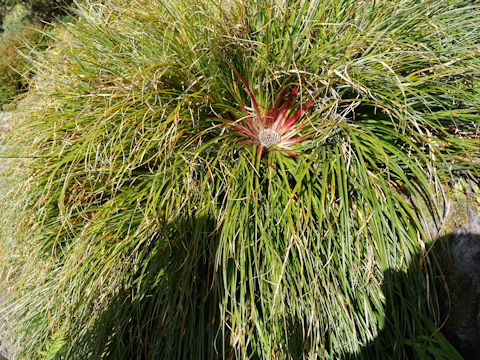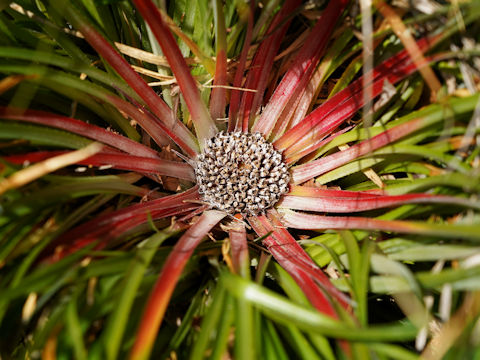
|
The Crimson bromeliad (Fascicularia bicolor) belongs to Bromeliaceae (the Pineapple family). It is an evergreen perennial that is endemic to Chile in South America. It is one of the hardiest bromeliads in the world and thrives in warm and cool climates. It grows on the ground and can reach 50 cm in height. The leaves are linear, slender, and serrated like spines, forming a rosette. In summer, at the top of the stem of the rosette, pale sky blue flowers are produced in a dense cluster in the center. The flowers are surrounded by ivory-white bract leaves. At this time of year, the innermost leaves of the rosette turn from green to scarlet red. (The specific epithet is due to this fact.) These red leaves serve as nectar markers that attract pollinators (such as hummingbirds).
|

